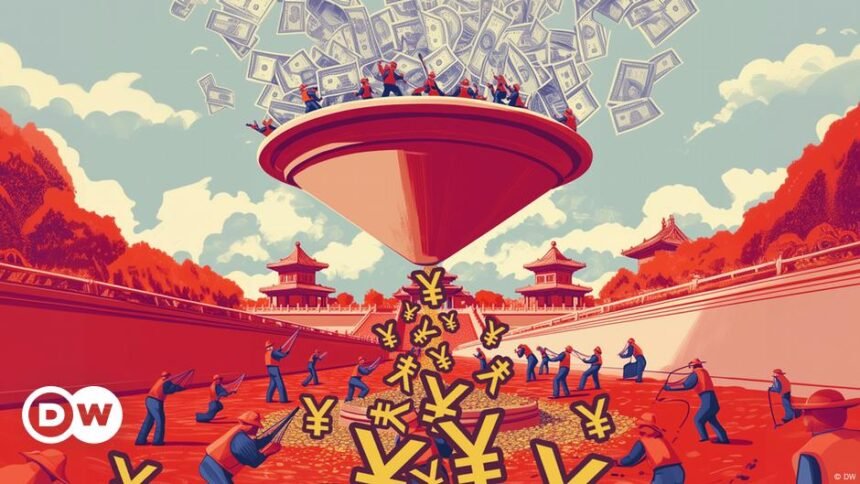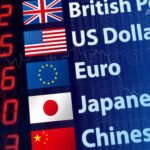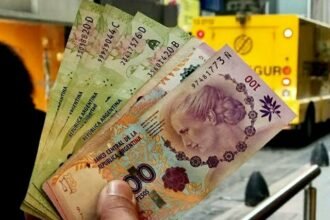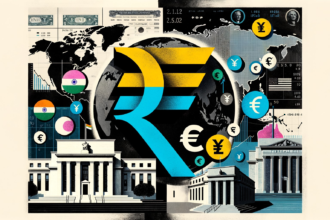When the West imposed sanctions on Russia over its full-scale invasion of Ukraine, it choked off the Kremlin’s ability to trade in US dollars, euros and other currencies. Russian banks were blocked from the SWIFT international payment-messaging system and the central bank’s foreign currency reserves were frozen. That forced Moscow to shift its remaining reserves to currencies not controlled by the West, including the Chinese renminbi (RMB) of which its principal unit of measurement is called the yuan.
The Kremlin’s energy deals with China, to offset the income loss from missing European buyers of Russian oil and gas, have since helped international transactions in the yuan to a record high, the British business daily Financial Times (FT) reported recently, citing data from China’s State Administration of Foreign Exchange (SAFE).
A third more yuan transactions
The number of bilateral transactions using the Chinese currency grew by a third in July to 53% from 40% in the same month in 2021. In 2010, 80% of outbound Chinese trade was conducted in dollars, the FT reported, but that figure has halved since Western sanctions on Russia went into effect. Over the same period, outbound trade in yuan has grown from almost zero to more than half of all transactions.
“Trading in yuan is convenient for both Russia and China,” Maia Nikoladze, associate director at the Atlantic Council think tank’s GeoEconomics Center, told DW. “Russia does not have too many other currency alternatives, while China benefits from exerting more economic influence over Moscow, and also makes progress towards internationalizing the yuan.”
Globally, however, the yuan is used for less than 7% of all foreign-exchange transactions, versus 88% for the dollar, according to the Dollar Dominance Monitor by the Washington-based Atlantic Council. The tracker found that 54% of export invoicing is still done in dollars, versus 4% for the yuan.
Other BRICS nations watch China-Russia trade
Yuan trade is benefitting from bilateral deals between Moscow and Beijing that led to Russia increasing its holdings of the Chinese currency, as part of its foreign exchange reserves. A currency swap agreement allows Russian banks to access yuan liquidity. Russian financial institutions have also started to issue yuan-denominated bonds.
Other countries, particularly those of the world’s fastest-growing BRICS economies, are watching the increasing yuan transactions with interest. BRICS leaders have mooted the idea of a shared currency, to create a multipolar financial system and be less reliant on the dollar,
Hanns Günther Hilpert, senior fellow at the German Institute for International and Security Affairs (SWP), said that many countries in the Global South are “concerned” about Western moves to freeze Russian reserves.
“Maybe they will have a problem with the United States in the future and their reserves could also be frozen. So these countries are shifting away from the dollar,” he told DW.
US Republican presidential candidate Donald Trump sees dedollarization as such a huge threat to US hegemony that he threatened at a recent campaign rally to slap countries that shun the currency with 100% tariffs.
“Many countries are leaving the dollar. They not going to leave the dollar with me. I’ll say, you leave the dollar, you’re not doing business with the United States because we’re going to put 100% tariff on your goods,” he said.
Saudi, Brazil and Argentina follow Russia
Beijing has sealed deals with several other countries to conduct more trade in yuan. Saudi Arabia, one of the largest oil exporters to China, signed a three-year currency swap with Beijing last November worth the equivalent of $6.93 billion (€6.26 billion).
That deal marked a significant potential shift in global energy markets, which have been traditionally dominated by the US dollar, hence the term Petrodollar. While a complete move to yuan pricing for all Saudi oil sales is unlikely in the short term, the arrangement allows both countries to test the waters without disrupting existing trade practices.
“Saudi Arabia is selling oil and gas to China. They get renminbi, which can be used to buy Chinese goods or to invest in China, which the Saudis have already done. It’s a barter trade,” said Hilpert.
The likes of Brazil, Iran, Pakistan, Nigeria, Argentina and Turkey have also agreed to conduct more yuan trade. In Iran’s case, heavy Western sanctions have forced Tehran further into China’s sphere of influence. Chinese refiners bought 90% of Iran’s exported oil last year, tanker-tracking data from trade analytics firm Kpler showed. Iran receives payments in yuan for its oil via small Chinese banks.
Argentina, which has been dealing with a brutal economic crisis, faces a severe shortage of US dollars to pay for imports, servicing debt, and stabilizing the Argentine peso. By settling more of its trade with China in yuan, the Latin American country can conserve those dollars and reduce the pressure on its other foreign currency reserves.
Capital controls stop yuan’s ascent
Despite moves by Beijing to internationalize, the Chinese currency is not yet fully convertible with other global currencies, which experts say is vital for it to become a reserve currency. Beijing maintains capital controls that restrict the free flow of capital in and out of the country.
As well as a threat to the Communist Party’s iron grip on power, Chinese leaders are concerned about a repeat of the 1997/8 Asian Financial Crisis, which saw Wall Street bet against several Asian currencies, due to the heavy indebtedness of their respective countries, sparking a massive flight of capital.
Hilpert thinks that becoming a fully convertible currency “comes with a price tag” which will be political and economic instability. “The renminbi would then be subject to currency speculation, which the Chinese are afraid of. They saw what happened to Thailand and South Korea,” he said.
At the peak of the late 90s Asia meltdown, the Thai baht and Korean won lost more than half of their value against the dollar and both countries, along with Indonesia, were forced to seek a bailout from the International Monetary Fund (IMF).
“Beijing has not signaled a willingness to lift capital controls, which would be a key factor in enabling the yuan to realize its potential as a currency for global trade,” Nikoladze said.
Another benefit of Beijing’s curbs on the yuan is having the flexibility to devalue the currency to boost exports during slowing economic growth. Chinese leaders did this most recently in 2015 and again during the COVID-19 pandemic. There’s speculation that another sharp devaluation may be on the cards.
Xi wants China to be a ‘financial power’
While the dollar’s role as the world’s reserve currency is seen as secure in the short and medium term, Chinese President Xi Jinping in January restated his ambition for China to become a “financial power,” noting that his country’s system was “distinct from Western models.”
Asia’s largest economy faces many challenges as it seeks to move the world toward a multipolar currency system. They include high levels of corporate, household and local government debt, a worsening real estate crisis and an opaque shadow banking system that helped support high property prices. Ongoing trade and geopolitical tensions with the West and Asian neighbors also threaten China’s relatively sluggish recovery from the pandemic.
Hilpert thinks that China is not really integrated with the global financial system because it has “many inefficiencies,” including state-owned enterprises which are highly subsidized, and a crude [domestic] financial system. “If you want to become a great economic power, this is not the right strategy,” he added.
Edited by: Uwe Hessler




















